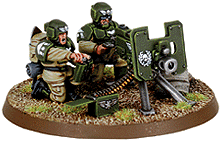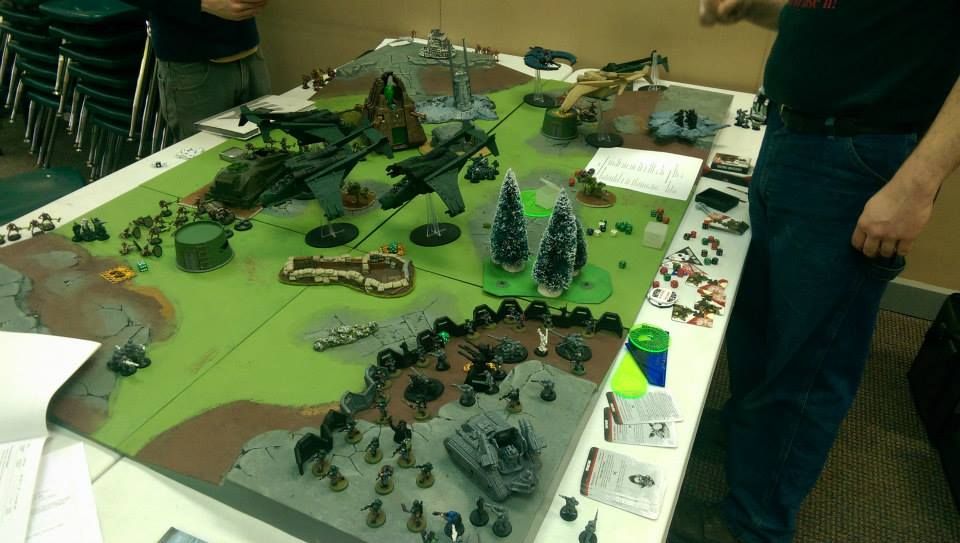What's below got wrong, but I figured it high time to examine the practical problem of the land monitor moving cross country bit. Whatever size you think they are, its certainly implied as pretty damn high for the biggest 40K stuff.
U.P. Cinnabar wrote:Not just that, but imagine the damage this thing would do to bridges and roadbeds, not to mention it'd probably sink like a stone in soft mud, given the ground pressure it would exert.
It'd simply be incapable of operating on a wide range of ground. Even four lane highway bridges would generally be out of the question in real life, perhaps not in40K. As it is a 70 ton tank already exceeds the weight limit of everything it crosses except rail bridges. During a war you already accept no small measure of rapid infrastructure implosion just from that kind of traffic.
A 300-600 ton vehicle meanwhile is literally 1-2 railroad locomotives.. and while its wider then locomotives, look at the width of the track beds railroads need under the narrow rails. Pretty damn massive pile of gravel or else gravel down to contact with rock. The railroad also takes advantage of its own grades being deliberately kept low, and the rail bed well drained by design. You need bridges and infastructure like at least a crappy two track railroad to be sure of getting anywhere at a speed. 40K might well have roads like that, they've had along time to pile up gravel.
But you get neither of those things if it point your sword and order the armored land monitor onto the cross country offensive. It totally could work on a hard pan desert like El Alamein or similar, but even then only at low speeds. The enemy would have every natural advantage possible.
Cross country is kind of the point of a tank, compared to just bringing an artillery piece stationed behind instead of ahead of your AA belt the way a tank is..
A 70 ton hull could carry around a 10in 45cal class of field gun if it was mounted with a 60 degree arc of traverse. 670lb shells lobbed about at that point. The craters alone from that caliber of fire become a problem for mr land monitor. You can expect gun weights today, if anyone bothered, about half that of WW2 for large calibers. A 600 ton vehicle could totally mount a 14-16in battleship gun in a turret now depending on how big a barrel you wanted, but not fire it without deploying some kind of jacks or spades.
For assault bridges and the 600 ton tank you'd need equipment proportional to the size of the 600 ton tank... and somehow be able to bring that up in an assault. Something like the Israeli ROLLER BRIDGE would be the only reasonable option I can see under more then the most trivial fire. Otherwise we know what building railroad class pontoon bridges looks like since Russia has them, and it isn't going to go quickly. A ferry has the practical problem of how damn much water it draws; your best option would be a massive hovercraft or hoverbarge assembled somewhere else, but that's pretty non tactical.
Elheru Aran wrote:
Would not there be a proportional increase in materials sciences as far as bridges and roads went, though?
For the structure of bridges, sure. For roads and bridge foundations though you just need a huge amount of shear mass to make it stable. If you have low mass fill you can get away with less weight, and thus less foundation in total, but that sort of material has a limited lifespan and only really makes sense on permafrost.
40K could spend centuries building up roadbeds, but that's not going to actually change anything about the ground around it or basic principles at work. Around megacities the earths surface may be built up somewhat by the accumulated human debris; but at that point they'd have conversely probably eroded the rest of the landscape pretty badly too. They never have proper fortifications for their age and scale though. Walls and ditches never lost their war value, it is only a question of how huge they have to be to be worth having been built in the first place. If you have centuries of strong central government you could build anything.
200 ton tanks would probably be okay driving around, except for the bridge question, but going past that is asking an awful lot of mother nature. The shear size of the tank would help it get over vertical obstructions and some gaps, but it makes steering to avoid groups of hazards far more difficult.
600 tons is 1-2mph creeping on dry dirt kind of land, and constantly afraid of the front track suddenly digging in. You would just need routes built for this kind of vehicle, at which point railroad guns that can also be moved by road in pieces when needed probably make more sense. That's a pesky issue with a huge tank, if its worthy of the name its not going to come apart easily. Russia designed something with a 305mm howitzer that was supposed to work like that. Baneblade, hell no.
Granted mud is mud, as noted earlier there's only so much you can do about that. I presume the solution is simple brute force. That, or you just don't send Baneblades into mud. Maybe they air-drop gravel across the entire battlefield before the fighting starts? I could totally see the Imperium doing precisely that...
Actually bringing gravel, like any other engineering supply given the capacity, would make sense, say from grinding up asteroids. Though given the themes of 40K this would also probably unleash some kind of chaos spirits or spread space plague when the soil of the planet invaded is despoiled by the act of dropping foreign stone upon it. I'd suggest sourcing gravel locally, such as by grinding up smaller enemy cities before proceeding to lay waste to the larger ones.
As far as actually building a useful road for a vehicle this scale goes, you'd need probably ~four feet of gravel and to make any difference at all worth trying past an unrolling matt, as the British famously had at Normandy. Which isn't going to work well in this context because of its shear size and debris in the way of unrolling it. Like trees.
Say 4ft gravel thickness, and embedding some big solid, but not interlinked steel treadway planks into the mass so it doesn't just blow apart under the sudden load. In the scheme of things those planks will not be the deal breaker here, but important to a mass of unconsolidated gravel working in this application.
So just the gravel, at 2,700lb cubic yard of gravel
35ft combat trail width x 4 ft gravel x 1 linear foot of road = 5.2 cubic feet for a really poor pathway for something this heavy. That weighs about 7 tons, which is about half the capacity of typical big on road four axle dump trucks.
So lets say we have armored ones of those shuttling out our gravel under mortar fire. And umm each one can get us two feet of road, but only after a bulldozer spreads it.
So to go 1 mile we need only 2,640 dump truck loads of gravel, and we haven't done anything to assure a way to get that gravel to the dump site, because presumably the Baneblade is advancing down this trail as we go firing at the enemy to make itself useful. Otherwise the road might go faster, but why do we even need the tank?
For reference this is assuming 37,320 tons of gravel for 1 mile. Which is pretty low considering how little it allows for other then a roadbed.
Now why not bigger trucks? Oh sure you can do that, and probably should at this point, but then every single one the enemy blows up is a bigger loss, and you have to have a way to fill bigger trucks and better roads to support them everywhere they go for thousands of trips. The 14 ton capacity trucks mooted earlier can put up with whatever, as you've all no doubt seen at construction sites. If they get stuck recovery is fairly simple.
Still raising the capacity to 60 tons, which is a really big articulating mining dump truck, only gains us 8.5ft feet of road per dump. 622 truckloads for 1 mile.
The proper use of engineering assets like this is to build a type of fortification called an artillery cavalier, a raised firing platform for numerous artillery pieces, or in this case tanks, that commanded above the surrounding terrain and any enemy fortifications, since you can only take the Baneblade stuff seriously for an assault on an actual fortress or fortified city.
So whatever you think of the actual sizes, the land monitor concept is just a non starter outside of desert conditions. Assaulting a fortress city with rings of 60ft thick walls in the barren desert, but not too barren or it won't have good drainage when it does rain, and it will rain, then the 300-600 ton class assault vehicle might not be actively detrimental to your force. I think 200 tons... you could at least get that to a lot of places. It would just be horrible whenever it did get stuck, say blocking your only supply road.
"This cult of special forces is as sensible as to form a Royal Corps of Tree Climbers and say that no soldier who does not wear its green hat with a bunch of oak leaves stuck in it should be expected to climb a tree"
— Field Marshal William Slim 1956





